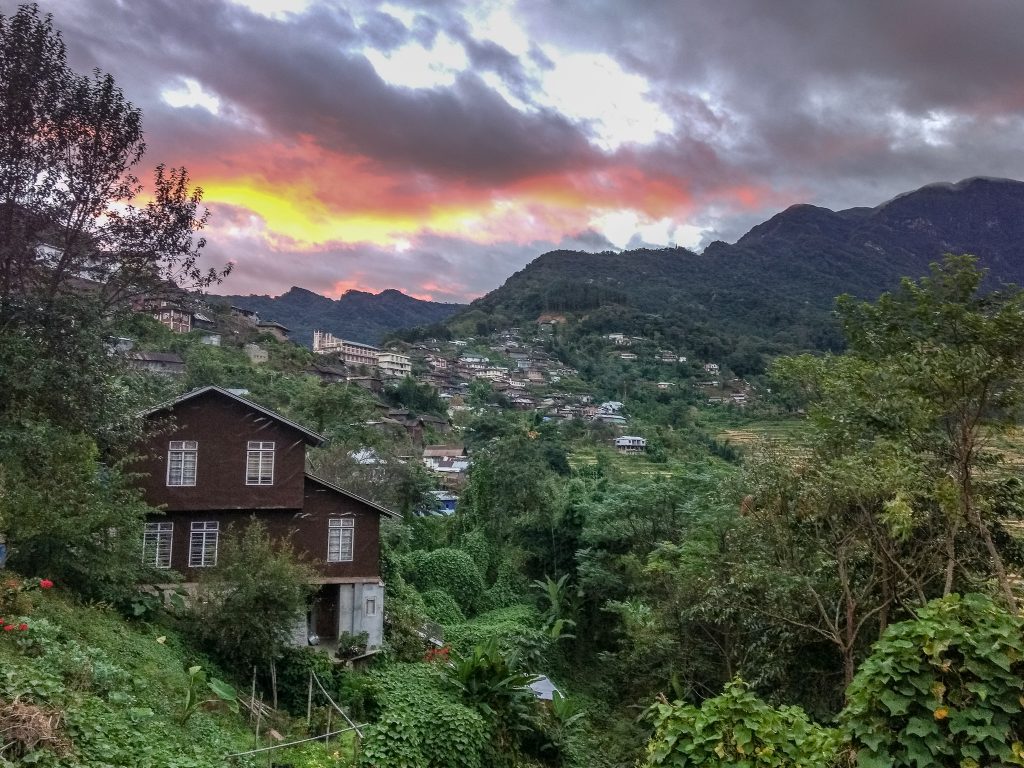Introduction: Embracing Sustainable Travel in Indian Villages
Come with me as we explore the lovely scenic views and rich biodiversity of traditional Indian villages on the quest to embrace eco-consciousness. Discover eco-friendly travel activities that simultaneously promote awareness of nature’s bounty and conservation whilst community development.
Khonoma Village, Nagaland: Preserving Biodiversity Through Conservation.

Nestled in the hilly areas of Nagaland, the Khonoma Village under the leadership of the people shows that conservation is a community affair. Explore colonial patterns and rituals, a rich tapestry of human experiences reflecting the daily life of men and women of different backgrounds. Experience the guided trails walks, with the villagers teaching you typical wise age-old practices which they inherited from their ancestors. Understand how Khonoma led to establishing the first community-based biodiversity conservation in this area that ensures to preserve a unique natural ecosystem. Jump inside the village’s exciting traditional customs, from Naga dishes, household skills, to learning their handicrafts. All of this along with the contribution to sustainable tourism projects that support the livelihood of the local people.
Agonda Village, Goa: Nature Hiding Place at the Tranquility of the Beaches.

Here, you will get the opportunity to unwind and immerse into the green living environment in the village of Agonda, Goa, placed along the gorgeous pristine seashores. Experience the relaxing atmosphere of eco-friendly accommodations with the bungalows/villas by the beach. Live your dream over golden sandy shores, absorb some sun and revel in the gentle breeze of open palms while enjoying live music at one of the many shacks. Hop onto dolphin-watching cruises and sea kayaking trips and live amidst the hidden treasures of Goa’s marine life in its spectacular coasts. Enjoy farm-to-table flavors that are easily accessible at different eating spot options at cafes situated on the seaside as well as seaside shacks. These spots offer a wide variety of food such as fresh seafood and locally sourced ingredients that are upholding Agonda’s sustainable gastronomy.
Spiti Valley, Himachal Pradesh: A Nature Haven for Indoor-Outdoor Enthusiasts in Himalayas!

Let’s explore the Spiti Valley, a highly unspoiled region in northern India which is like the paradise for adventurers. It gives the top view of unusual scenery that attracts tourists. Come and explore the ancient monasteries, which are gravity-defying and constructed on the edge of roaring mountains, where Buddhist monks still preserve the centuries-old traditions in the growing heights of ridges and grand valleys. Discover the valley’s tranquil lakes and flowing rivers, where migratory birds blossoms in the sanctuary which is like a high-altitude paradise to them. Be part of the eco-friendly trekking to remote tribal settlements in the hidden valleys, where you can get yourself lost with the inbred artistic diversity of Bodh or Chesang communities of Spiti. If you want to experience the community hospitality, then make sure to stay in traditional homestays or eco lodges.
How to Reach: Accessing Eco – Tourism Villages
You can always choose between, flight, train, and cars to reach to your destination. But if you are an eco – tourism enthusiast then I would suggest using public transports like trains and busses. However, here are the options which you can take to reach your destination.
Nearest Airport:
- Khonoma: Dimapur Airport, Nagaland
- Agonda: Dabolim course, Goa
- Spiti Valley: Bhuntar Airport, Himachal Pradesh
From the airports, travelers may either prefer tried and trusted taxi operators or opt for other alternative transport methods such as buses that have proven to be environment friendly to get them to their preferred eco-tourism village. At the end, those who are sensitive and eco-conscious travels have the last-mile connectivity alternatives like cycle rickshaws and carbon-friendly shuttles to reduce their carbon footprint.
Best Season to Travel: Weather and Wildlife Encounters
Timing is critical so plan your adventurous trip to intersect eco-tourism activities that are best experienced at different times of the year, especially if you would like to be part of nature’s magic and wildlife migration.
- Khonoma: November to February have cool temperatures, it is lower than compared to other months of the year. In these months you can witness the bustle of migratory birds in village’s conservation area.
- Agonda: Get acquainted with the beautiful beaches of Agonda from October to March when the weather is pleasant. If you are lucky then you can also witness the turtle nesting along the coastline.
- Spiti Valley: Spiti valley is just not a destination to be reached for thrill and adventure, it is the journey that really matters. Visit this valley between June to September to witness the valley’s vibrant flora and fauna in full bloom, including rare Himalayan wildlife such as snow leopards and ibex.
Ideal Stay Time: Soaking in Nature’s Serenity
To make the most of the relaxation of eco-tourism villages don’t confine your stay to only two days, three to four days is ideal for each destination. In this way, you can enjoy a comfortable stay and explore the wonders of nature, get involve in some outdoor activities and mingle with the likeminded people who stand for an environmentally sustainable society. Try accommodating yourself in eco homes like homestays and ecolodges, where you can experience the sustainable village life with a relatively lower impact to the environment.
Costing: Budget-Friendly Eco-Tourism Experiences
Traveling on a budget? Here’s a rough estimate of expenses to help you plan your eco-tourism adventure:
- Accommodation: Cheap alternatives like eco-lodges and homestays are always available in these villages. And prices for these places range from INR1000 to INR 3000 per night, which totally depends on the type of place and the availability of necessary amenities.
- Transportation: Public buses and shared taxis provide an affordable convenience meeting the needs of few kilometers within the villages somewhere around INR 50.
- Food: Enjoy local delicacies and organic meals based on the concept of farm-to-table at eco- friendly eateries and cafes. The total cost may vary between INR 200- INR 500 per person, per meal.
- Activities: Take guided nature walks, go on wildlife safaris and experience some elements of the local eco-tourism operators. And these services are available between INR 500 – INR 1500 per person.
Tourist Attractions: Exploring Natural Wonders and Wildlife
In addition to immersing yourself in eco-friendly activities, each eco-tourism village offers unique attractions and natural wonders worth exploring:
- Khonoma: Discover the birthplace of the Blyth’s tragopan, and many more species in the woods around the Khonoma Nature Conservation and Tragopan Sanctuary, a sanctuary native to the region.
- Agonda: A great way to learn more about the problems of sea turtle conservation is to stop by the local turtle conservation center. Here you will be able to discover more about the efforts going on in the area and even witness nests by the sea on the sandy shores.
- Spiti Valley: Discover the ancient monasteries of Key, Tabo, and Dhankar. These monasteries are nestled amidst Spiti’s rugged landscapes. And embark on wildlife safaris to spot elusive Himalayan wildlife in their natural habitat.
Explore India’s pristine villages on an environmentally responsible adventure. In these villages the nature’s bounty is just waiting to be found and enjoyed.
